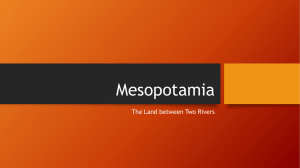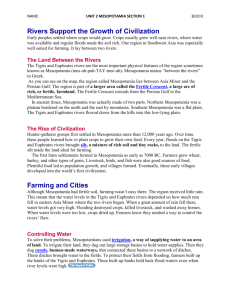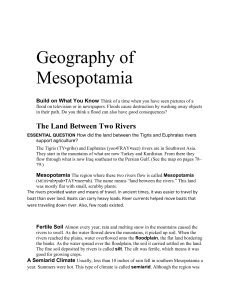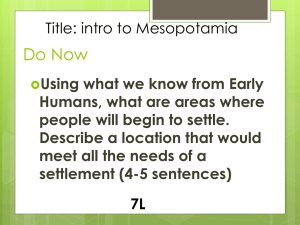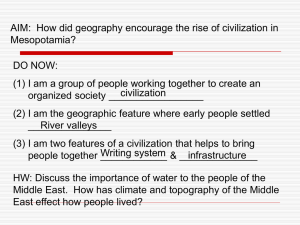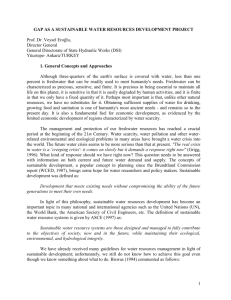Irrigation Practices -
advertisement
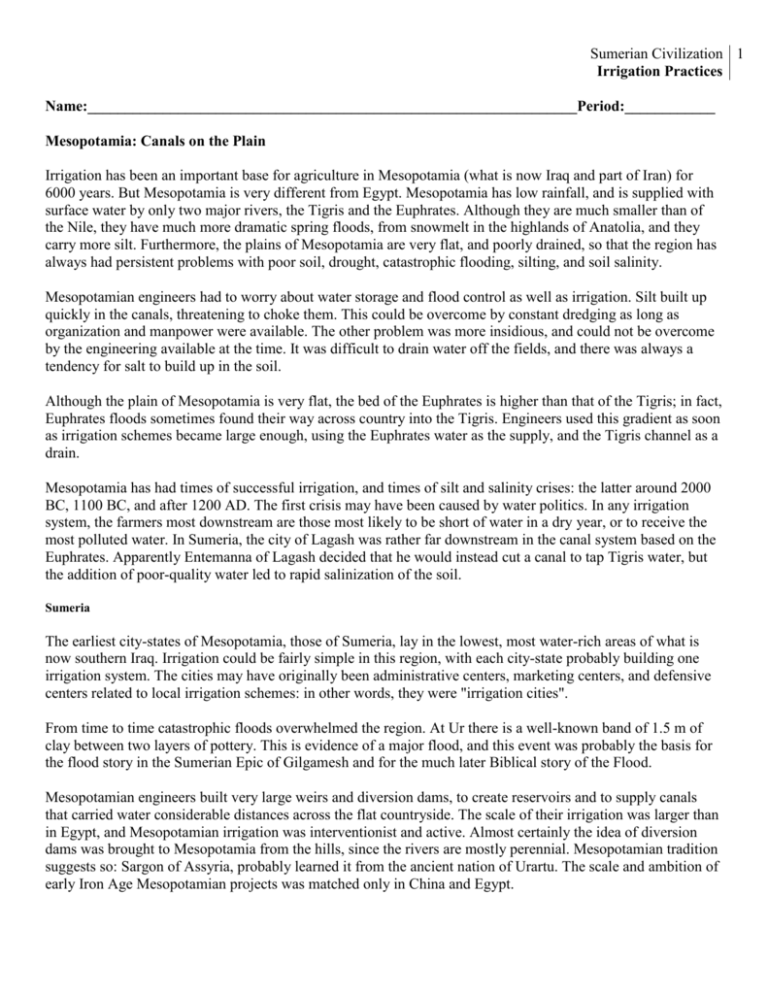
Sumerian Civilization 1 Irrigation Practices Name:_________________________________________________________________Period:____________ Mesopotamia: Canals on the Plain Irrigation has been an important base for agriculture in Mesopotamia (what is now Iraq and part of Iran) for 6000 years. But Mesopotamia is very different from Egypt. Mesopotamia has low rainfall, and is supplied with surface water by only two major rivers, the Tigris and the Euphrates. Although they are much smaller than of the Nile, they have much more dramatic spring floods, from snowmelt in the highlands of Anatolia, and they carry more silt. Furthermore, the plains of Mesopotamia are very flat, and poorly drained, so that the region has always had persistent problems with poor soil, drought, catastrophic flooding, silting, and soil salinity. Mesopotamian engineers had to worry about water storage and flood control as well as irrigation. Silt built up quickly in the canals, threatening to choke them. This could be overcome by constant dredging as long as organization and manpower were available. The other problem was more insidious, and could not be overcome by the engineering available at the time. It was difficult to drain water off the fields, and there was always a tendency for salt to build up in the soil. Although the plain of Mesopotamia is very flat, the bed of the Euphrates is higher than that of the Tigris; in fact, Euphrates floods sometimes found their way across country into the Tigris. Engineers used this gradient as soon as irrigation schemes became large enough, using the Euphrates water as the supply, and the Tigris channel as a drain. Mesopotamia has had times of successful irrigation, and times of silt and salinity crises: the latter around 2000 BC, 1100 BC, and after 1200 AD. The first crisis may have been caused by water politics. In any irrigation system, the farmers most downstream are those most likely to be short of water in a dry year, or to receive the most polluted water. In Sumeria, the city of Lagash was rather far downstream in the canal system based on the Euphrates. Apparently Entemanna of Lagash decided that he would instead cut a canal to tap Tigris water, but the addition of poor-quality water led to rapid salinization of the soil. Sumeria The earliest city-states of Mesopotamia, those of Sumeria, lay in the lowest, most water-rich areas of what is now southern Iraq. Irrigation could be fairly simple in this region, with each city-state probably building one irrigation system. The cities may have originally been administrative centers, marketing centers, and defensive centers related to local irrigation schemes: in other words, they were "irrigation cities". From time to time catastrophic floods overwhelmed the region. At Ur there is a well-known band of 1.5 m of clay between two layers of pottery. This is evidence of a major flood, and this event was probably the basis for the flood story in the Sumerian Epic of Gilgamesh and for the much later Biblical story of the Flood. Mesopotamian engineers built very large weirs and diversion dams, to create reservoirs and to supply canals that carried water considerable distances across the flat countryside. The scale of their irrigation was larger than in Egypt, and Mesopotamian irrigation was interventionist and active. Almost certainly the idea of diversion dams was brought to Mesopotamia from the hills, since the rivers are mostly perennial. Mesopotamian tradition suggests so: Sargon of Assyria, probably learned it from the ancient nation of Urartu. The scale and ambition of early Iron Age Mesopotamian projects was matched only in China and Egypt.

